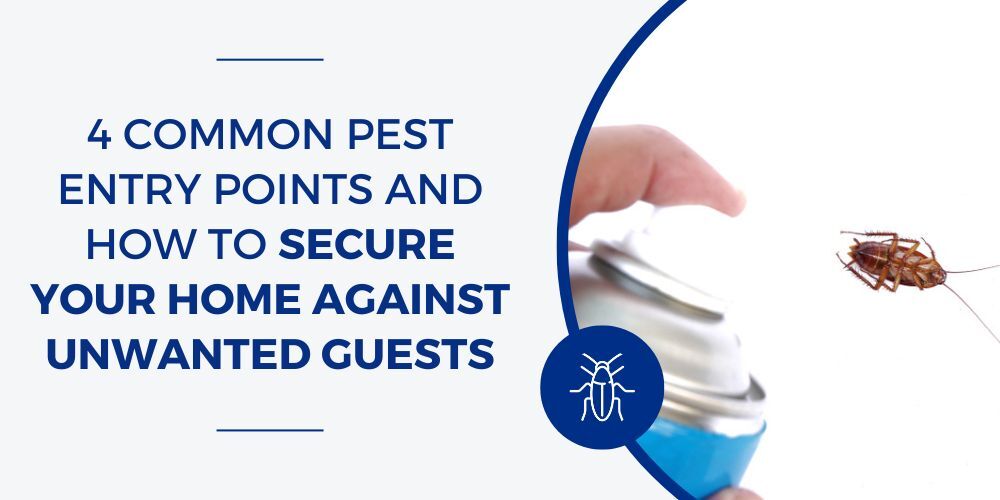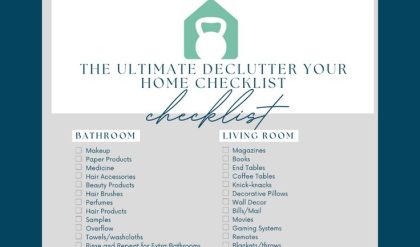
Pest Control 101: Protecting Your Home from Unwanted Guests
Your home: a sanctuary, a haven, a… buffet for unwelcome critters? Before you reach for the phone and call in the cavalry of pest control professionals (which might be necessary!), let’s explore the world of proactive pest prevention. This isn’t about industrial-strength chemicals and hazmat suits; it’s about understanding your enemy and outsmarting them with clever tactics. Think of it as a thrilling game of strategy, where your home is the castle, and you’re the valiant knight.
Knowing the Enemy: Common Household Pests
Before you can fight, you need to identify your foe. Different pests require different strategies. Here’s a quick look at some common invaders:
| Pest | Description | Usual Hiding Spots |
|---|---|---|
| Ants | Tiny, organized invaders. | Cracks, crevices, near food sources |
| Cockroaches | Fast, resilient, and carry diseases. | Dark, damp areas, behind appliances |
| Mice/Rats | Rodents that can cause significant damage. | Walls, attics, basements |
| Spiders | Eight-legged creatures, mostly harmless. | Corners, dark recesses |
| Termites | Wood-destroying insects. | Foundations, wooden structures |
| Bed Bugs | Tiny blood-sucking insects. | Mattresses, bedding, furniture |
The Art of Prevention: Your First Line of Defense
The best pest control is prevention. Think of your home as a fortress with multiple layers of defense. Here’s how to build that fortress:
1. Sanitation is King: Pests are attracted to food and water. Keep your kitchen meticulously clean. Wipe up spills immediately, store food in airtight containers, and don’t leave dirty dishes in the sink overnight. Regularly clean out your pantry, checking for expired food and signs of infestation.
2. Seal the Gaps: Pests are masters of infiltration. Inspect your home for any cracks, gaps, or holes in walls, foundations, and around windows and doors. Seal them with caulk or weather stripping. This prevents entry points for unwanted guests.
3. Moisture Control: Pests thrive in damp environments. Fix leaky pipes, ensure proper ventilation in bathrooms and basements, and use dehumidifiers if necessary. A dry home is a less appealing home for pests.
4. Landscaping Tactics: Keep grass and vegetation trimmed away from your home’s foundation. This removes hiding places and reduces the likelihood of pests finding their way inside. Store firewood away from the house, as it can attract insects and rodents.
5. Natural Repellents: Explore natural pest deterrents. Certain scents, like peppermint oil, citronella, and lavender, can repel some insects. Place bowls of these oils strategically around your home, or use essential oil diffusers. Diatomaceous earth can also be effective against crawling insects.
When Prevention Fails: Strategic Intervention
Despite your best efforts, sometimes pests find a way in. If you notice a significant infestation, it’s time for more decisive action:
1. Identify the Pest: Knowing the specific pest you’re dealing with is crucial for effective treatment.
2. Targeted Treatment: There are various pest control products available, from traps to sprays. Choose products specifically designed for the pest you’ve identified, following the instructions carefully.
3. Professional Help: For serious infestations, it’s best to call in the professionals. Experienced pest control technicians have the expertise and tools to handle large-scale infestations safely and effectively. They can also identify the root cause of the problem and prevent future infestations.
Living in Harmony (with Fewer Pests)
Pest control isn’t about eradicating every single insect or rodent. It’s about maintaining a balance, minimizing the risk of damage, and protecting your family’s health. By combining proactive prevention with targeted intervention, you can create a home that’s both pest-resistant and comfortable. Remember, vigilance and a strategic approach are your best weapons in this ongoing battle for your home’s sanctuary.

Additional Information
Pest Control 101: A Deeper Dive into Protecting Your Home
The foundational principles of pest control, as outlined in “Pest Control 101,” provide a crucial first step in safeguarding your home. However, a deeper understanding of the underlying principles and nuanced approaches can significantly improve efficacy and minimize risks. This analysis delves into key aspects, offering a more comprehensive perspective.
I. Beyond Identification: Understanding Pest Biology and Behavior:
Simple identification is insufficient. Effective control requires understanding a pest’s life cycle, breeding habits, and preferred food sources. For instance, understanding that German cockroaches prefer warm, moist environments allows for targeted treatment focusing on plumbing leaks and kitchen appliances. Similarly, knowing that termites thrive in damp wood necessitates proactive measures like proper ventilation and moisture control. Failing to grasp these biological intricacies leads to inefficient, reactive pest management rather than proactive prevention.
Example: Ant infestations often stem from a readily available food source. Simply eliminating visible ants ignores the colony’s queen and food trail, ensuring recurrence. Effective control requires locating the colony, eliminating the food source, and employing targeted treatments like bait stations that reach the queen and the entire colony.
II. Integrated Pest Management (IPM): A Holistic Approach:
“Pest Control 101” likely touched on IPM, but its strategic importance merits further discussion. IPM prioritizes prevention and minimizing pesticide use. It employs a multi-pronged approach encompassing:
- Monitoring: Regular inspection to detect early infestations.
- Exclusion: Preventing pest entry through sealing cracks, installing screens, and proper sanitation.
- Cultural Controls: Modifying the environment to make it less hospitable (e.g., removing standing water, storing food properly).
- Biological Controls: Utilizing natural predators (e.g., ladybugs for aphids, parasitic wasps for certain caterpillars).
- Chemical Controls: Using pesticides as a last resort, selecting the least toxic option and applying it strategically.
Case Study: A large office building adopted an IPM program. By implementing thorough sanitation, sealing entry points, and utilizing biological controls, they reduced pesticide usage by 70% while maintaining effective pest control. Their overall costs decreased due to reduced pesticide expenses and fewer lost workdays associated with pest-related issues.
III. The Risks of DIY Pest Control:
While “Pest Control 101” might advocate for DIY solutions in certain situations, the risks associated with improper pesticide application must be emphasized. Incorrect usage can lead to:
- Ineffective treatment: Using the wrong pesticide or applying it incorrectly can fail to eradicate the pest population, leading to a larger, more resistant infestation.
- Health hazards: Improper handling or inhalation of pesticides poses significant health risks to humans and pets. Many pesticides are acutely toxic and can cause allergic reactions, respiratory problems, or even long-term health consequences.
- Environmental damage: Improper disposal of pesticides can contaminate soil and water sources.
Statistics: The National Pesticide Information Center receives thousands of calls annually regarding pesticide exposure incidents, highlighting the risks associated with DIY pest control without proper training and knowledge.
IV. Professional Pest Control: When to Seek Expert Help:
Recognizing when professional assistance is necessary is critical. Severe infestations, infestations of dangerous pests (e.g., stinging insects, termites), or situations requiring specialized equipment and expertise necessitate calling a qualified pest control professional. They possess the knowledge, experience, and licensed products to handle complex situations safely and effectively. Choosing licensed and insured professionals is vital for safety and liability reasons.
V. Prevention: The Most Effective Strategy:
Ultimately, the most cost-effective and environmentally sound approach to pest control is prevention. Regular maintenance, proactive sanitation, and environmental modifications significantly reduce the likelihood of infestations. This should be the core message emphasized beyond the basic identification and treatment strategies presented in “Pest Control 101.”
By expanding upon these points, we provide a more nuanced and valuable understanding of pest control, emphasizing a proactive, integrated, and risk-aware approach that transcends simple identification and treatment. This comprehensive view empowers homeowners to make informed decisions and effectively protect their homes from unwanted guests.






